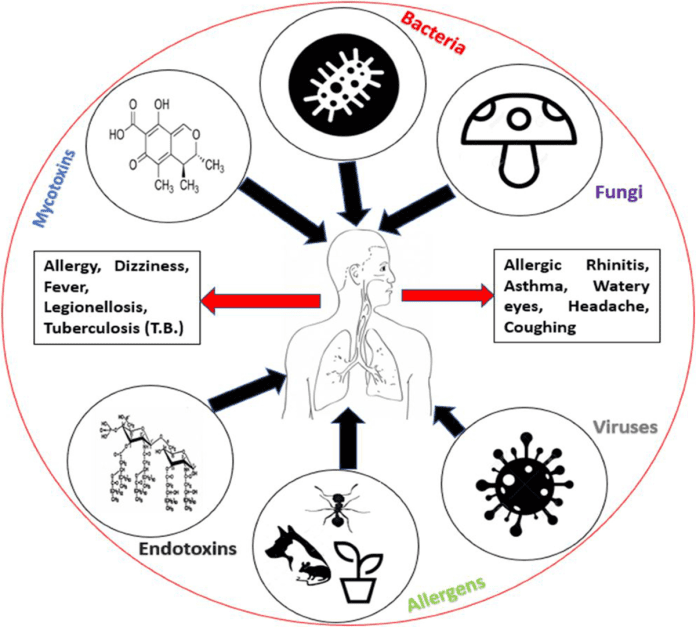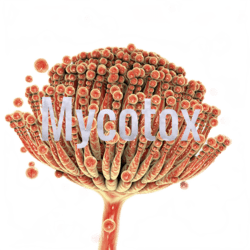Table of Contents
Abstract
Lipopolysaccharides (LPS), potent endotoxins from Gram-negative bacteria, have emerged as significant contributors to neuroimmune activation and neurodegenerative processes. This integrated review compares two complementary studies: one examining transcriptomic biomarkers in Parkinson’s Disease patients exposed to environmental LPS, and another exploring systemic neonatal LPS exposure in rodents and its sex-specific effects on the autonomic brainstem. Together, they illustrate a continuum from early-life immune priming to adult neuroinflammation and potential neurodegeneration, highlighting pathways including Toll-like receptors (TLRs), microglial activation, autophagy impairment, and α-synuclein pathology. Although we know systemic neonatal inflammation modulates neuroinflammation within the brain (Wang et al., 2013), These further findings reinforce the importance of recognizing environmental biotoxins as modifiable risk factors for chronic neuroinflammatory conditions in neonates and emphasize the need for early detection, exposure mitigation, and most importantly targeted intervention strategies.
1. Introduction
Neuroinflammation is increasingly recognized as a central mechanism in a range of neurodegenerative and neurodevelopmental conditions. Parkinson’s disease (PD) is a heterogeneous neurodegenerative disease in which neuroinflammation is a common factor. Dementia is also a neurodegenerative condition that is contributing to cognitive decline. Pathways are not well defined for neurodegenerative diseases such as dementia;
Here 2 papers outline Lipopolysaccharide (LPS/endotoxins), which is a key structural component of Gram-negative bacteria, is a potent activator of the innate immune system through Toll-like receptor (TLR) pathways, particularly TLR2 and TLR4. This review synthesizes data from Shoemaker et al. (2025) and Hedley et al. (2023) to elucidate how environmental and developmental LPS exposures converge on shared neuroimmune pathways with potential lifelong consequences.
2. Key Findings of the Reviewed Studies
2.1 Human Transcriptomic Data: Parkinson’s Disease and CIRS (Shoemaker et al.)
- Identified unique gene expression profiles (Triple Positives, TLR2, RELA, Akt) in Parkinson’s Disease patients with chronic inflammatory response syndrome (CIRS) linked to environmental LPS exposure from water-damaged buildings.
- Demonstrated microglial activation, impaired autophagy, and upregulated NFkB pathways as central features of environmentally mediated neuroinflammation.
- Proposed the potential for early detection of prodromal Parkinson’s via transcriptomic screening.
2.2 Animal Model: Neonatal LPS Exposure and Autonomic Dysfunction (Hedley et al.)
- Demonstrated that systemic neonatal LPS administration causes acute and long-term neuroinflammation in the brainstem, with significant sex-specific effects.
- Showed persistent changes in inflammatory mediators (IL-6, IL-1β, TNFα, NLRP3) and microglial morphology into adulthood, suggesting durable reprogramming of neuroimmune pathways.
- Highlighted baseline sex differences in inflammatory mediator expression, emphasizing differential vulnerability.
3. Shared Mechanisms and Pathways
3.1 Toll-like Receptor (TLR) Activation
Both studies confirm the centrality of TLR pathways in translating peripheral endotoxin exposure into central nervous system (CNS) inflammation. Shoemaker et al. reported persistent upregulation of TLR2 and RELA (NFkB subunit) in humans with environmentally linked Parkinson’s, while Hedley et al. observed TLR-mediated inflammasome activation in neonatal rat brainstems.
3.2 Microglial Priming and Chronic Activation
Microglia, as resident immune cells of the CNS, are repeatedly shown to become primed by LPS exposure. Shoemaker et al. noted upregulation of microglial genes consistent with chronic activation, while Hedley et al. demonstrated persistent morphological changes (branch length, soma size) indicative of altered microglial reactivity from neonatal stages into adulthood.
3.3 Autophagy Dysfunction and Protein Aggregation
Shoemaker et al. linked LPS-triggered inflammation to impaired autophagy pathways, facilitating α-synuclein misfolding and aggregation, a hallmark of Parkinson’s pathology. While the animal model did not directly test autophagy, the inflammasome and cytokine profiles described by Hedley et al. imply pathways that may disrupt cellular homeostasis and clearance mechanisms.
3.4 Sex-specific Vulnerability
Hedley et al. demonstrated striking sex-specific responses to early LPS exposure, with baseline differences and divergent trajectories for key cytokines. Although Shoemaker et al. did not stratify by sex, their results imply that gene-environment interactions may intersect with sex-specific immune regulation, warranting further investigation.
3.5 Environmental LPS as a Modifiable Risk Factor
Both studies emphasize that exposure to LPS—whether through early-life infection, environmental contamination, or biotoxin-laden indoor air—constitutes a modifiable risk for chronic neuroinflammatory conditions. This convergence strengthens the argument for improved environmental controls, early screening in high-risk groups, and personalized medical interventions.
4. Legal and Clinical Implications
4.1 Clinical Practice must Integrate Environmental studies
- Supports the integration of environmental exposure histories into neurological and neurodevelopmental assessments.
- Highlights the potential for transcriptomic screening to detect at-risk individuals in the prodromal phase of neurodegenerative diseases.
- Reinforces the need for gender-sensitive research and intervention strategies.
4.2 For Legal and Regulatory Contexts
- Provides biological plausibility for environmental injury claims, especially in cases involving water-damaged buildings or occupational LPS exposure.
- Underscores the importance of enforcing indoor air quality standards and timely remediation of damp environments.
- Justifies precautionary measures for vulnerable populations, including infants and those with known genetic susceptibilities.
- Environmental exposures to the foetus, as environmental exposures during critical periods of development can permanently reprogram normal physiological responses, thereby increasing susceptibility to disease later in life-a process known as developmental reprogramming.
5. Conclusions
Taken together, these studies offer complementary evidence that environmental endotoxin exposure is not a benign or transient insult, but rather a potent, persistent driver of neuroimmune dysregulation. They underscore the importance of a life-course approach, recognizing critical windows of vulnerability—from conception, the neonatal period through to adulthood—and highlight the potential for early detection and intervention to mitigate long-term impacts.
6. References
- Shoemaker R et al. (2025). A Novel Therapeutic Approach to Parkinson’s Disease: Using Transcriptomics to Identify Unique Patterns of Gene Expression including ‘Triple Positives,’ Toll receptors, and Endotoxin Exposure.
- Hedley KE et al. (2023). Autonomic Regions of the Brainstem Show a Sex-Specific Inflammatory Response to Systemic Neonatal Lipopolysaccharide. bioRxiv. https://doi.org/10.1101/2023.06.14.544893
- Wang T, Shi C, Luo H, Zheng H, Fan L, Tang M, Su Y, Yang J, Mao C, Xu Y. Neuroinflammation in Parkinson’s Disease: Triggers, Mechanisms, and Immunotherapies. Neuroscientist. 2022 Aug;28(4):364-381. doi: 10.1177/1073858421991066. Epub 2021 Feb 12. PMID: 33576313. https://pubmed.ncbi.nlm.nih.gov/33576313/
- Ahmad MA, Kareem O, Khushtar M, Akbar M, Haque MR, Iqubal A, Haider MF, Pottoo FH, Abdulla FS, Al-Haidar MB, Alhajri N. Neuroinflammation: A Potential Risk for Dementia. Int J Mol Sci. 2022 Jan 6;23(2):616. doi: 10.3390/ijms23020616. PMID: 35054805; PMCID: PMC8775769.
- Mallozzi M, Bordi G, Garo C, Caserta D. The effect of maternal exposure to endocrine disrupting chemicals on fetal and neonatal development: A review on the major concerns. Birth Defects Res C Embryo Today. 2016 Sep;108(3):224-242. doi: 10.1002/bdrc.21137. Epub 2016 Sep 22. PMID: 27653964. https://pubmed.ncbi.nlm.nih.gov/27653964/


